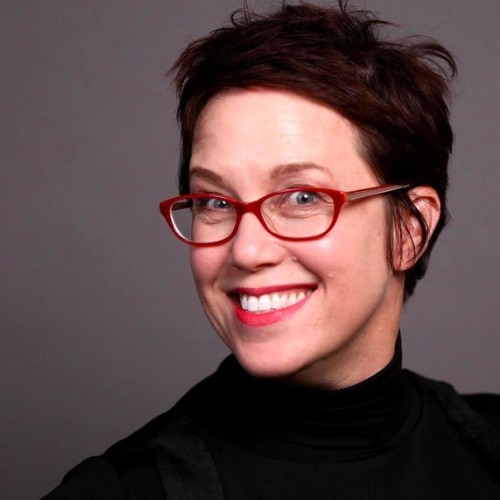Recently, I gave some UX career development advice to 60 UX practitioners at a Women in UX Meetup, organised by UX Australia and UX Career Mentor Mags Hanley. The feedback post-event was so good, I thought I’d put my career advice in writing for others to reference.
My focus in this post is on helping UX candidates to understand the market, use these insights to build a business case for your career and bring it all together to tell your career story.
Let’s take a deep dive…
1. Research the market (look outward)
The first step is to gain an understanding of the market and then work out how your skills align. Ideally you want to identify the key skills / experience that are in demand and ensure you are highlighting these if you have them. I would recommend you research the following key elements:
Salaries
- Check out Aquent's online Salary Comparison tool, it aggregates data in real time, giving you a current pulse check on market expectations
Types of UX roles being advertised
- Keep an eye out for roles coming through on your LinkedIn feed and forums such as the UX Australia slack channel.
- Run some job searches on LinkedIn, Seek, Indeed etc. I recommend keeping the search as general as possible to gain a big picture overview (eg. UX Designer not Senior or Midweight) as job titles and levels can vary and are sometimes included in posting content.
- You can also search for UX jobs or register for job alerts on Aquent's website.
Research in demand skills / experience
- Call a specialist recruiter – like me ;D and ask for insights
- Dig into your job search results — can you spot any trends?
- Perhaps there are lots of mid-weight level roles. Do most UX Design roles also request UI Design skills? Do lots of job roles mention Product? Do User Research roles mention User Testing? etc…
- Scan postings for the number of years experience — no matter the job title, this can vary significantly (a senior in one team may be a Mid-weight in another team).
- If you have a dream client and want to dig a bit deeper, run a LinkedIn search for employees and check out their team for skills focus / background / experience level. ie. you might be UX Research focused, but their team is all UX/UI blend (or vice versa), so this may help frame out skills you want to build upon.
Research the level of UX job roles being advertised and understand how they differ
I spend a lot of time talking to people about this, in terms of their own skills but also how it differs between roles and clients. Here are some general notes on skill level:
- Graduate / internship / junior > Less than 1 year commercial studio experience.
- Midweight > MUST have commercial studio experience, ideally more than 2 years.
- Senior > At least 5 years specialist / niche skill experience, usually more. Requirements vary significantly between clients, but at a minimum you will need the ability to prioritise and manage multiple projects. Strong stakeholder communication skills — usually a hands-on practitioner. There maybe some level of leadership involved, but not always and it maybe informal (ie. mentoring/coaching, but no direct reports, or leading everything UX related on project teams).
- Lead > I recommend investigating what leadership means for the role (and for you). Is it leading your practice area, leading projects/programs of work, or people leadership with direct reports or building teams?
2. Build a UX business case (look inward)
Once you have a good understanding of what's happening in the market, it's time to work out where your UX experience, skills and expectations sit.
Run a critical review
- Undertaking a critical review is important to understand your role, skills, level and salary expectations – you need to be realistic here, it can be tough.
Identify the core UX skills / experience that you currently have and identify the skills you need to develop
- Run a current state / future state analysis on yourself.
- You want to identify where your strengths and skills lie.
Identify your USP/value add/niche skills (hard & soft skills)
- Work out where you go above and beyond and what sets you apart — it could be sector experience, the type of projects you've worked on, or your personal approach. Ideally you want this to align to where you want to be long term.
If you've moved into the UX space, what can you leverage?
- These could help bolster your USPs — for example if presented with five other similar candidates (eg. Midweight UX Designers), what would set you apart? What else do you bring to the role/team/business?
- Remember a client is investing in your CURRENT skill level for their role, so while you may have 15 years digital design experience, if you are wanting to work as a Service Designer this means very little beyond creating really nice reports and presentations, and having some insights into the digital platform and systems being used.
Where do you want to be 1, 3, and 5 years time?
- This can be a loose idea or fixed objectives, but either way, you want something on your radar, bubbling away in the background. If you're contracting, you might need to keep reminding yourself of this — balancing short term focus with longer term career objectives.
Now you have a career objective, how are you going to achieve it?
Be realistic about building a plan to get yourself there.
- Can you gain experience via your current role / employer? Make it known you want to build your skills and actively seek out opportunities to support on projects or tasks. It may be sitting in to help with note taking, support on workshops, designing up research reports etc.
- Do you need to consider a side step role to gain inroads/skills in a key area?
- You may only have the option of training/development via a permanent role so be realistic about this — if your preference is to contact where you're being paid by the hour/day, training may not be achievable.
- Can you volunteer your time/skills to help a NFP sector client? It's a win/win and good for your soul.
- Is there potential to supplement project experience with self initiated projects?
3. Tell your career story
- This is where you weave this all together
- Bring all these elements together to make your strategic business case for new job search or appraisal.
- This allows you to review opportunities with a strategic lens.
- Speak confidently and realistically about who you are, what your skills are, what you can offer.
- This gives you clarity on the type of questions you can ask re. What the business/role can offer you.
I want you to think about your own career story now
Can you sum up your key focus, what sets you apart and your journey into UX in a couple of sentences?
If you’ve made it through to the end of this content – congratulations, I know it's looooong! But I hope it's given you some ideas on how / where to make a start.
If you’re interested in connecting, I share lots of content on LinkedIn relating to my focus area of UX, CX and Service Design.
If you would like to hear about UX job opportunities in Sydney or Melbourne that may align, please feel free to drop me a line – I would love to assist if I can.
Latest.

AI and the job search: What’s changed and how to come out on top
Technology, Job Seeker, Industry Trends

How Creative Ops Leaders are driving value in 2025 and beyond
Industry Trends, Leadership

Accessibility as a Design Principle: Lessons from Telstra’s Digital Design Team
Thought Leadership, Design, Leadership, Digital Accessibility




